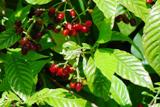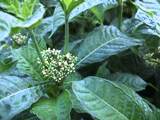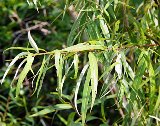Discover Florida Nature
It's time to explore the natural Florida


|
|
|
|
|
 West
Indian Mahogany (Swietenia mahagoni)- West Indies mahogany
occurs in the West Indies, Bahamas and South Florida. In Florida, West
Indies mahogany is restricted to tropical hammocks in parks and
preserves on the Upper Florida Keys, and on the mainland in upland
coastal hammocks in
Everglades National Park. Mahogany formerly extended further north
in Florida, but it has been cut to extinction. West Indies mahogany is
a grand tree with a broad, dense symmetrical crown and a straight trunk
often buttressed and swollen at the base. It has the potential to get 75
feet tall with a trunk diameter in excess of 2 feet, but such large
trees are very rare. Most mahoganies are no more than 30-40 feet tall.
Mahogany is a semi-deciduous tree which loses its old leaves at the end
of winter just as the new growth is beginning. Mahogany produces small,
fragrant, rather inconspicuous flowers on the year's new growth as the
leaves are emerging, and both male and female flowers are produced on
the same tree. West
Indian Mahogany (Swietenia mahagoni)- West Indies mahogany
occurs in the West Indies, Bahamas and South Florida. In Florida, West
Indies mahogany is restricted to tropical hammocks in parks and
preserves on the Upper Florida Keys, and on the mainland in upland
coastal hammocks in
Everglades National Park. Mahogany formerly extended further north
in Florida, but it has been cut to extinction. West Indies mahogany is
a grand tree with a broad, dense symmetrical crown and a straight trunk
often buttressed and swollen at the base. It has the potential to get 75
feet tall with a trunk diameter in excess of 2 feet, but such large
trees are very rare. Most mahoganies are no more than 30-40 feet tall.
Mahogany is a semi-deciduous tree which loses its old leaves at the end
of winter just as the new growth is beginning. Mahogany produces small,
fragrant, rather inconspicuous flowers on the year's new growth as the
leaves are emerging, and both male and female flowers are produced on
the same tree.Wild Coffee:  Shiny-leaved
Wild Coffee (Psychotria nervosa)- Shiny Leafed Wild Coffee is
a shade tolerant native shrub with flowers that attract butterflies and
fruits that attract birds. The shiny leaves are an attractive, eye
catching addition to any yard. Wild Coffee will grow both in sun or
shade. It tends to grow taller (up to 10 ft.) and spread out more (up to
8 ft.) in a shady setting while full sunlight keeps the plant smaller.
Wild Coffee does well in a wide range of soils from acidic to alkaline
and it is moderately drought tolerant. It is not freeze tolerant which
explains why South Florida is the northern extent of this plants range.
Aside from Florida it is a common understory shrub in the West Indies,
Southern Mexico, Central America and some areas in South America. Early
settlers in Florida brewed a coffee substitute drink from the seeds of
this plant. Shiny-leaved
Wild Coffee (Psychotria nervosa)- Shiny Leafed Wild Coffee is
a shade tolerant native shrub with flowers that attract butterflies and
fruits that attract birds. The shiny leaves are an attractive, eye
catching addition to any yard. Wild Coffee will grow both in sun or
shade. It tends to grow taller (up to 10 ft.) and spread out more (up to
8 ft.) in a shady setting while full sunlight keeps the plant smaller.
Wild Coffee does well in a wide range of soils from acidic to alkaline
and it is moderately drought tolerant. It is not freeze tolerant which
explains why South Florida is the northern extent of this plants range.
Aside from Florida it is a common understory shrub in the West Indies,
Southern Mexico, Central America and some areas in South America. Early
settlers in Florida brewed a coffee substitute drink from the seeds of
this plant. Velvet-leafed
Wild Coffee (Psychotria sulzneri)- Found in the
Florida hammocks, velvet-leafed wild coffee is a shrub with velvety
leaves that set off clusters of greenish-white flowers and bright red
fruits. Butterflies, such as the zebra longwing, visit the flowers.
Birds eat the colorful fruit. These are great contributors to a
low-maintenance, naturalized landscape. The flowers are itty bitty
little things, but still a good source of nectar. velvet-leafed wild
coffee is good to use to fill in partially shaded areas, more like a 4-5
foot tall groundcover, than a shrub Velvet-leafed
Wild Coffee (Psychotria sulzneri)- Found in the
Florida hammocks, velvet-leafed wild coffee is a shrub with velvety
leaves that set off clusters of greenish-white flowers and bright red
fruits. Butterflies, such as the zebra longwing, visit the flowers.
Birds eat the colorful fruit. These are great contributors to a
low-maintenance, naturalized landscape. The flowers are itty bitty
little things, but still a good source of nectar. velvet-leafed wild
coffee is good to use to fill in partially shaded areas, more like a 4-5
foot tall groundcover, than a shrub Coastal
Plain) Willow
(Salix caroliniana) -The coastal plain willow is generally described as
a Perennial Tree. This tree is native to the United States and has its
most active growth period in the Spring . The Coastal Plain Willow has
Green foliage and inconspicuous Green flowers, with inconspicuous White
fruits or seeds. The greatest bloom is usually observed in the Early
Spring, with fruit and seed production starting in the Spring and
continuing until Spring. Leaves are not retained year to year. The
Coastal Plain Willow has a Long life span relative to most other plant
species and a Rapid growth rate. At maturity, the typical Coastal Plain
Willow will reach up to 33 feet high, with a maximum height at 20 years
of 33 feet. Coastal
Plain) Willow
(Salix caroliniana) -The coastal plain willow is generally described as
a Perennial Tree. This tree is native to the United States and has its
most active growth period in the Spring . The Coastal Plain Willow has
Green foliage and inconspicuous Green flowers, with inconspicuous White
fruits or seeds. The greatest bloom is usually observed in the Early
Spring, with fruit and seed production starting in the Spring and
continuing until Spring. Leaves are not retained year to year. The
Coastal Plain Willow has a Long life span relative to most other plant
species and a Rapid growth rate. At maturity, the typical Coastal Plain
Willow will reach up to 33 feet high, with a maximum height at 20 years
of 33 feet.
|
|
|
Advertise | Privacy Statement | Dog Encyclopedia | Video |Contact | Alaska Nature |
|